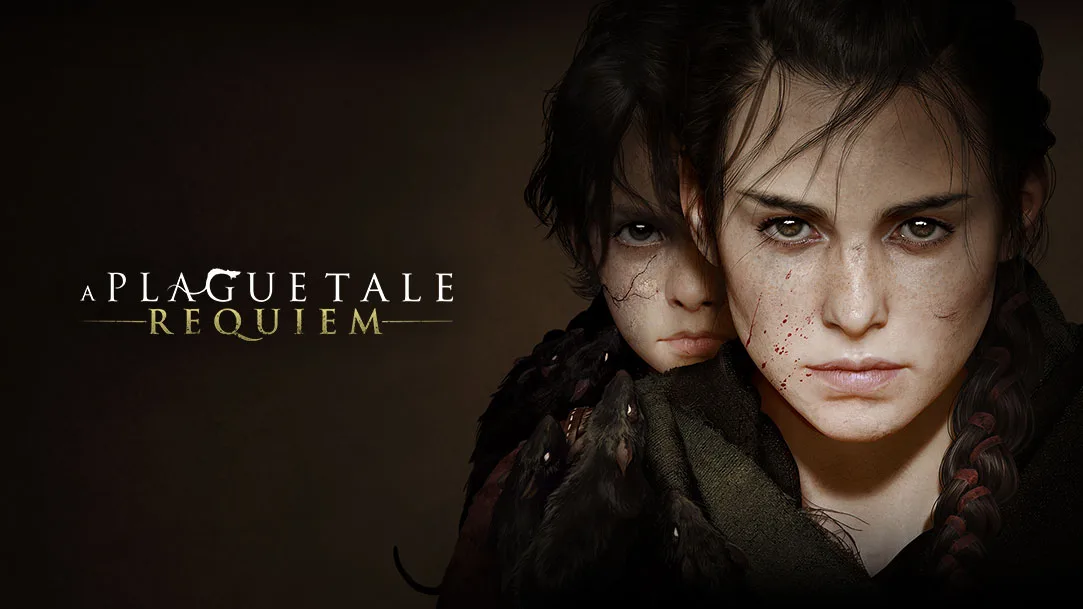
Overview of A Plague Tale: Requiem
In a world overrun by plague and supernatural forces, A Plague Tale: Requiem takes players on a harrowing journey through medieval France, where survival is a constant struggle. As the sequel to the critically acclaimed A Plague Tale: Innocence, this game continues the story of siblings Amicia and Hugo, whose bond is tested against the backdrop of a world consumed by war, disease, and death. With its innovative stealth mechanics, emotional storytelling, and breathtaking visuals, A Plague Tale: Requiem offers an unforgettable experience that combines action, strategy, and deep character exploration. The game explores themes of family, sacrifice, and the indomitable will to survive in an unforgiving world.
Overview of A Plague Tale: Requiem
A Plague Tale: Requiem is the highly anticipated sequel to the 2019 game A Plague Tale: Innocence, developed by Asobo Studio and published by Focus Entertainment. Released in October 2022, the game continues the harrowing journey of Amicia and her younger brother Hugo as they navigate a brutal medieval world ravaged by both the Black Death and an overwhelming horde of rats. The game follows the siblings as they try to survive in a dangerous environment, fighting off both human and supernatural threats. The story picks up right after the events of its predecessor, with Amicia and Hugo fleeing the chaos that continues to plague their lives. In this sequel, the siblings find themselves in an even darker world, where danger lurks around every corner. The game expands on the emotional depth and complexity of its predecessor, offering players an even more intimate look at the relationship between Amicia and Hugo, whose bond is both a source of strength and a constant burden. Set in the 14th century, A Plague Tale: Requiem portrays an atmosphere steeped in historical events, yet with elements of the fantastical. Unlike many titles in the action-adventure genre, the game blends emotional storytelling with a heavy focus on stealth and puzzle-solving mechanics. The narrative expands on the themes of survival, family, and sacrifice that were introduced in its predecessor, while adding new layers of depth and complexity. The setting allows for an exploration of medieval Europe at a time when the Black Death was sweeping across the continent, providing a grim but realistic context for the story. As a highly atmospheric experience, the game not only draws players into its intense story but also offers a glimpse into a world devastated by plague and war. The title’s mechanics are designed to keep players on the edge of their seat, using innovative gameplay systems to maintain tension while offering moments of relief through exploration and narrative development. The plot unfolds at a deliberate pace, allowing players to digest the emotional moments while staying invested in the game’s constant challenges.
Stealth and Strategy
The gameplay in A Plague Tale: Requiem heavily relies on stealth mechanics, encouraging players to sneak past enemies rather than engage them in direct combat. This strategy-based approach helps heighten the sense of vulnerability that permeates throughout the game. Amicia, the main character, must use her resourcefulness and limited tools to navigate through the world, often having to improvise in order to survive. The game’s design fosters a deep sense of tension, as the player is encouraged to avoid conflict whenever possible. The sheer number of enemies that Amicia encounters — both human and rat — means that a direct confrontation is almost always a bad idea. Instead, players must rely on stealth and cunning to avoid detection. This creates a dynamic and engaging gameplay loop, as players must carefully assess each situation, making use of their environment and limited resources. A key component of the game’s stealth mechanics is the use of the environment. Players are encouraged to hide in shadows, distract enemies using noise, or manipulate light sources to avoid detection. In some instances, the use of fire is necessary to keep the rats at bay or clear the path forward, which requires careful planning and timing. The game’s design promotes a sense of dread and urgency, as the player must always be on the lookout for danger. Each area feels alive with the threat of discovery, pushing players to think critically about every move. Moreover, A Plague Tale: Requiem introduces new crafting mechanics, allowing players to upgrade Amicia’s weapons and tools. This adds another layer of strategy, as players must decide when and how to use their limited resources. The blend of stealth, strategy, and puzzle-solving ensures that each encounter feels fresh and challenging, making every decision impactful. This evolution of the gameplay system makes each step in the game feel deliberate and thought-provoking, creating an experience that is engaging both mentally and emotionally.
Gameplay and Mechanics
In terms of gameplay, A Plague Tale: Requiem introduces several new mechanics that expand upon the foundations laid by its predecessor. The first noticeable difference is the increased scale of the world and the variety of environments the player can explore. The game’s setting includes lush forests, ravaged villages, and sun-dappled landscapes, as well as dark and desolate ruins that exude a sense of mystery. These environments are not just aesthetically pleasing but are also key to gameplay, as they often hold crucial items or puzzles that must be solved to progress. The game also introduces new character abilities, with Hugo’s growing powers playing an integral role in the game’s puzzle-solving and combat dynamics. As Hugo’s abilities evolve, players are required to use his powers strategically to advance through the world. The game cleverly integrates these powers into the puzzles, making them feel like an organic part of the gameplay rather than simply a gimmick. The dynamic between Amicia and Hugo is central to the game’s design, as players must manage their interactions, using both their strengths to overcome challenges. Another notable aspect of the game is the companion dynamics, particularly the relationship between Amicia and Hugo. The player must manage the siblings’ interactions, as Hugo’s unique abilities play a crucial role in solving puzzles. His mysterious powers over the rats become increasingly important, and the game integrates these powers into the mechanics in a seamless way, requiring players to think creatively. As Amicia progresses in the game, she becomes a more capable and empowered character, but her journey remains deeply tied to her younger brother’s powers. The combat mechanics have also been refined in this sequel. While stealth remains the primary mode of engagement, Amicia can now craft more complex weapons and tools, adding a layer of depth to the gameplay. Players can customize their approach to combat, using tools such as a sling, alchemy-based projectiles, or even crafting explosives to deal with threats. The balance between combat and stealth is finely tuned, providing a satisfying and varied gameplay experience. This makes each encounter feel unique and tailored to the player’s strategy, providing ample opportunities to experiment with different approaches to combat.
Emotional Journey
The emotional depth of A Plague Tale: Requiem is what sets it apart from many other games in its genre. The bond between Amicia and Hugo is at the heart of the narrative, and the player’s investment in their relationship grows as the game progresses. Their journey is filled with moments of heartache, joy, and conflict, making every decision feel personal. As players navigate this brutal world, the stakes are always high, and each action has a profound impact on their emotional journey. The game’s emotional core is not only centered on the relationship between Amicia and Hugo, but also on the choices the player must make throughout the story. These choices force players to confront difficult moral dilemmas, which ultimately shape the course of the game’s narrative. The tension between what is right and what is necessary for survival is ever-present, making the emotional stakes feel even higher. This blend of emotional storytelling with challenging gameplay makes the game’s story both impactful and memorable. As the story unfolds, Amicia must confront not only the external threats around her but also the internal struggle of protecting her brother while coming to terms with the harsh reality of the world they live in. The game skillfully weaves emotional and narrative beats into the gameplay, making each encounter feel meaningful. The stakes are high, and players can’t help but become emotionally attached to the characters and their journey. The choice-driven narrative also adds to the weight of the story, with decisions affecting the outcome of certain events. These choices reinforce the theme of sacrifice, as the characters are constantly faced with difficult decisions that test their moral compass. The deep emotional narrative intertwines perfectly with the game’s mechanics, making the overall experience feel highly personal and engaging.

The Story and its Impact
At its core, A Plague Tale: Requiem is about the struggle for survival in a world that seems to have lost all hope. The game’s setting during the Black Death provides a stark backdrop for the story, emphasizing themes of loss, survival, and the unbreakable bond between siblings. The narrative picks up shortly after the events of the first game, with Amicia and Hugo seeking refuge from the overwhelming threat of the plague. As they journey through a war-torn and disease-ravaged France, Amicia and Hugo must navigate not only the plague but also a series of otherworldly threats, including a sinister force tied to the rats. The ever-present danger forces them to rely on each other as they struggle to survive, all while the world around them crumbles. The plot delves deeply into themes of sacrifice, trust, and the human cost of survival, making it a compelling narrative that draws players in. One of the most striking elements of the game’s narrative is how it explores the psychological toll that living in such a brutal world has on its characters. Amicia’s transformation from a protective older sister to a hardened survivor is portrayed with subtlety, and the game excels at conveying the emotional weight of the events through character dialogue and the environment. This transformation highlights the central themes of the game, with each character being shaped by their circumstances and the harsh world around them.
Immersive World
The visual design of A Plague Tale: Requiem is nothing short of breathtaking. The game’s environments are richly detailed, capturing the desolation of a world ravaged by plague and war. From the eerie glow of the rat-infested areas to the sweeping vistas of open fields, the game’s art direction enhances the emotional impact of the story. The atmosphere is haunting, with every corner of the world contributing to the overall feeling of isolation and danger. In addition to its visual beauty, the game’s sound design is a crucial part of the immersion. The ambient noises of the world, such as the distant sounds of the plague or the ominous skittering of rats, create an intense sense of tension. The score, composed by Olivier Derivière, perfectly complements the narrative, with orchestral themes that reflect the emotional highs and lows of the journey. Together, the visuals and sound of A Plague Tale: Requiem create an immersive world that draws players in, making them feel as though they are truly experiencing the events firsthand. The attention to detail in both the art and audio design is one of the game’s standout features, contributing significantly to its critical acclaim.
Conclusion
A Plague Tale: Requiem is a masterclass in combining narrative, gameplay, and atmosphere to create a deeply emotional and engaging experience. The game’s blend of stealth, strategy, and character-driven storytelling ensures that it stands out in the action-adventure genre. With its breathtaking visuals, immersive sound design, and emotionally charged narrative, A Plague Tale: Requiem is a must-play for anyone looking for a rich, thought-provoking gaming experience.




